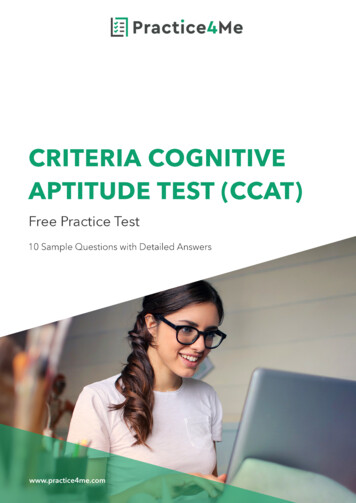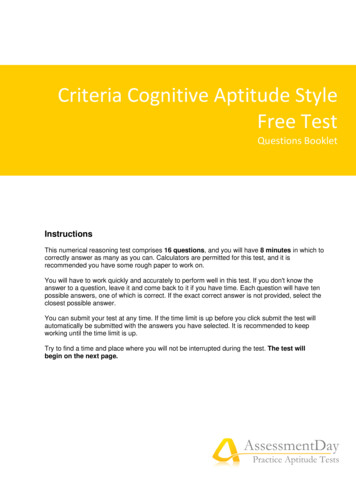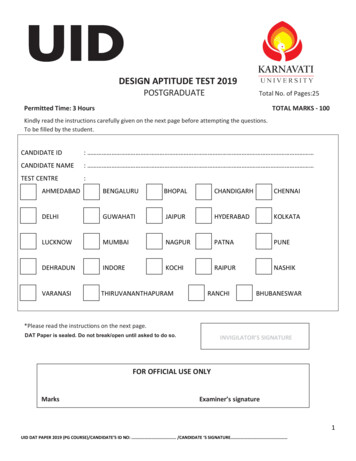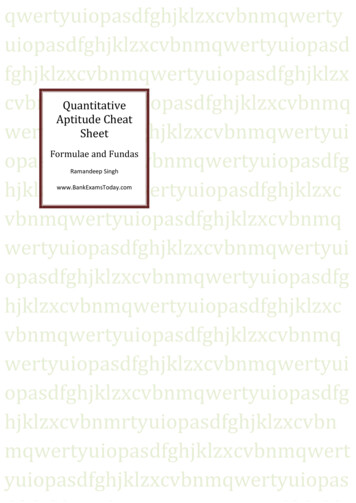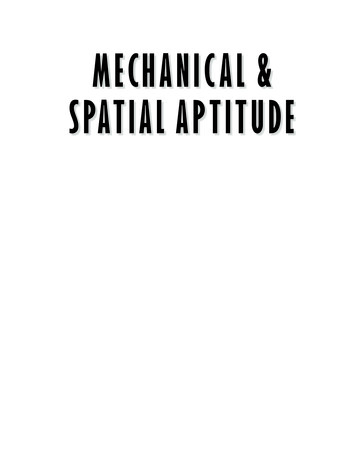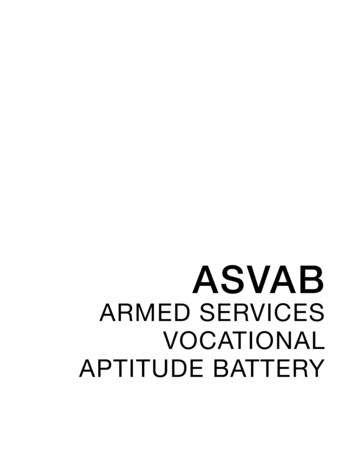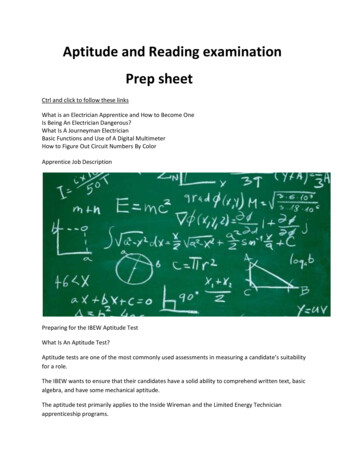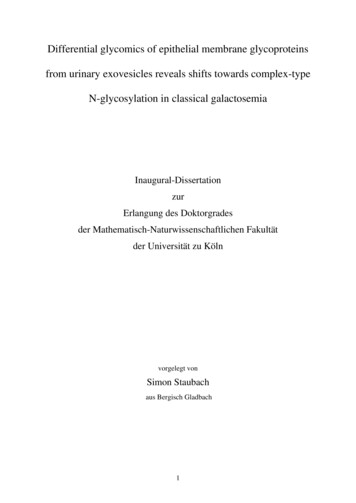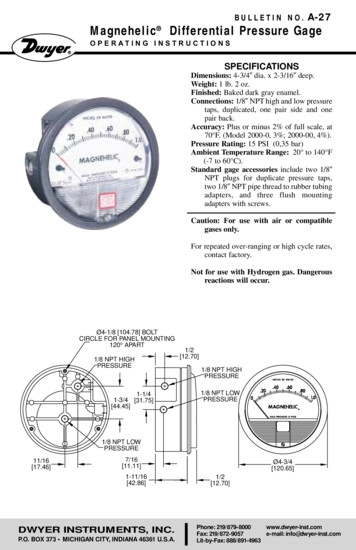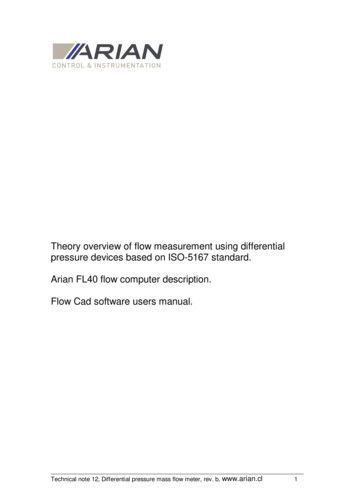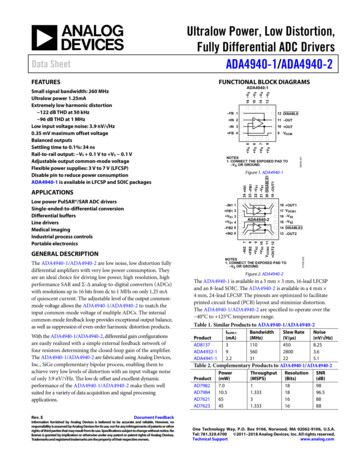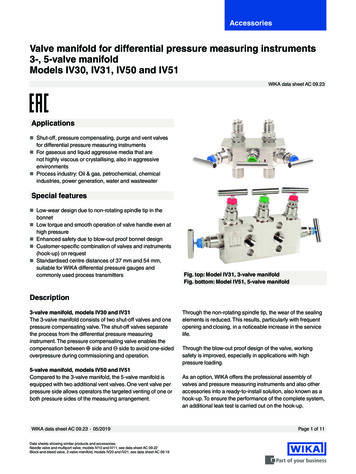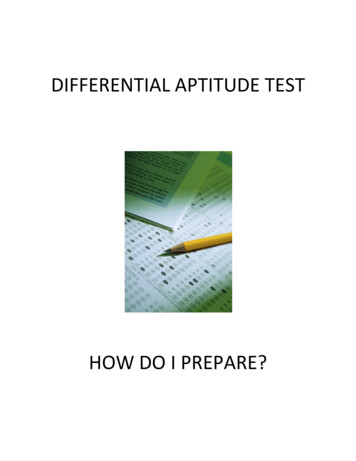
Transcription
DIFFERENTIAL APTITUDE TESTHOW DO I PREPARE?
The differential Aptitude Tests have been carefully constructed to help you learnabout your abilities. It consists of seven different tests. You may be tested on allor various sections of the test depending on the program you are applying for.Test NameVerbal ReasoningNumerical AbilityAbstract ReasoningMechanical ReasoningSpace RelationsSpellingLanguage UsageNumber of Questions50404570609050Time to Complete30302030251020You cannot use a calculator or a dictionary. All necessary supplies will be suppliedto write the test. Please remember to bring a piece of picture identification withyou at the time of writing.The results of your DAT exam will be mailed to you in a Self-Addressed envelopeprovided to us at the time of writing. Please contact Testing Services if you haveany questions or concerns about the DAT examNote: Students with disabilities must arrange for exam accommodations a monthin advance with an LAP counselor to ensure accommodations can be put in place.(Documentation supporting the disability is required) For more informationplease contact Accessibility Services at accessibility.services@keyano.ca or 780791-8934In the pages that follow are examples of the style of questions you can expect onthe Differential Aptitude Test. These samples have been taken directly from theexam. A scantron sheet will be provided to you at the exam to record youranswers.Best of Luck!Page 2
LANGUAGE USAGEThis test consists of fifty sentences, each divided into four parts, lettered A, B, C, and D. You areto consider each sentence as an example of formal, written English. In many of the sentences,one part has an error in punctuation, grammar, or capitalization. Decide which part, if any, iswrong.Some sentences have no error in any part. If there is no error in a sentence, fill in the circle forthe letter N. Here are some examples:Example X.I just / left / my friends / house.ABCDExample Y.Ain’t we / going to / the office / next week?ABCDExample Z.I went / to a ball / game with / Jane.ABCDIn Example X, friends should have an apostrophe; it must be friend’s to be correct.In Example Y, ain’t is wrong,In Example Z there is no errorThere is no more than one wrong part in any sentence. When you find a part with an error,blacken the circle with its letter on the Answer Sheet. Some of the sentences are entirelycorrect. If no part has an error, blacken the circle for N.You will have 20 minutes for this test. Work as rapidly and as accurately as you can. If you arenot sure of an answer, mark the choice that is your best guess.Page 3
SPELLINGThis test is composed of a series of words. Some of them are correctly spelled; some areincorrectly spelled. You are to indicate whether each word is spelled right or wrong byblackening the proper circle on the Answer Sheet. If the spelling of the word is right, fill in thecircle that has the R, for RIGHT. If it is spelled wrong, blacken the circle that has the W, forWRONG. Here are some examples:ExamplesW. manX. gurlY. cattZ. dogYou will have 10 minutes for this test. Work as rapidly and as accurately as you can, If you arenot sure of an answer, mark the choice that is your best guess.Page 4
SPACE RELATIONSThis test consists of 60 patterns which can be folded into figures. To the right of each patternthere are four figures. You are to decide which one of these figures can be made from thepattern shown. The pattern always shows the outside of the figure. Here is an example:In example X, which one of the four figures—A, B, C, D—can be made from the pattern at theleft? A and B certainly cannot be made; they are not the right shape. C is correct both in shapeand size. You cannot make D from this pattern.Remember: In this test there will always be a row of four figures following each pattern. Inevery row there is only one correct figureNow look at Example Y on the next page.Page 5
In Example Y all the figures next to the pattern are correct in shape, but only one of them canbe made from this pattern. Note that when the pattern is folded, the figure it makes will havethree grey surfaces. Two of these will be the largest surfaces, either of which could be the topor the bottom of a box. The other will be one of the smallest surfaces, which would be one endof the box.Now look at the four figures:Figure A is wrong. The long, narrow side is not grey in the pattern and the largestsurface must be greyFigure B is wrong. The largest surface must be grey, although the grey end could be atthe backFigure C is wrong. The grey top and end are all right, but there is no long grey side in thepattern.Figure D is correct. A large grey surface is shown as the top, and the end surface shownis also grey.So, you see, all four figures are correct in shape, but only one—D—show the grey surfacescorrectly.Remember: The surface you see in the pattern must always be the outside surface of thecompleted figure. Study the pattern carefully and decide which figure can be made from it. Only one of the four figures following the pattern is correct. Show your choice on the Answer Sheet by blackening the circle for the letterthat is the same as that of the figures you have chosen.You will have 25 minutes for this test. Work as rapidly and as accurately as you can. If you arenot sure of an answer, mark the choice that is your best guess.ABSTRACT REASONINGPage 6
In this test you will see rows of designs of figures like those below. Each row across the page isone problem. You are to mark your answers on the Answer Sheet.Each row consists of four figures called Problem Figures and five called Answer Figures. Thefour Problem Figures make a series. You are to find out which one of the Answer Figures wouldbe the next (or the fifth one) in the series of Problem Figures. Here are two examples:In Example X, note that the lines in the Problem Figures are falling down. In the first square theline stands straight up, and as you go from square to square the line falls more and more to theright. In the fifth square the line would be lying flat, so the correct answer—chosen from amongthe Answer Figures—is D.In Example Y, study the position of the black dot in the Problem Figures. Note that it keepsmoving around the square clockwise: upper left corner, upper right corner, lower right corner,lower left corner. In what position will it be seen in next? It will come back to the upper leftcorner. Therefore, B is the correct answer.Remember—You are to select, from among the Answer Figures, the one figure that belongsnext in the series.You will have 20 minutes for this test. Work as rapidly and as accurately as you can. If you arenot sure of an answer, mark the choice that is your best guess.MECHANICAL REASONINGPage 7
This test consists of a number of pictures and questions about those pictures. Look at the twoexamples below, to see just what to do.Example X shows a picture of two people carrying a typewriter on a board and asks, Whichperson has the heavier load? (If equal, mark C.) Person B has the heavier load because theweight is closer to him than to person A.Example Y asks, Which weighs more? (If equal, mark C.) As the scale is perfectly balanced, Aand B must weigh the same, so the correct answer is C.Do not forget that there is a third choice for every question.You will have 30 minutes for this test. Work as rapidly and as accurately as you can. If you arenot sure of an answer, mark the choice that is your best guess.Page 8
NUMERICAL ABILITYThis test consists of forty numerical problems. Next to each problem there are five answers.You are to pick out the correct answer and mark its letter on the Answer Sheet. If you do notfind a correct answer among the first four choices. Choice N for every problem is none of these,which means that a correct answer is not among the first four choices. Only on answer shouldbe marked for each problem. Do your figuring on the scratch paper you have been given, andreduce fractions to lowest terms. Here are some examples.Example X.Add1312Example Y.A. 14B. 16C. 25D. 59N. none of theseSubtractA. 830B. 1520C. 16D. 26N. none of theseIn Example X, 25 is the correct answer, so C wouldbe the letter you would bubble in on the AnswerSheet.In Example Y, the correct answer has not been given,so the circle with the letter for none of these—N—would be the correct Answer.Remember—Each answer must be reduced to its simplest terms. For example, if two choicesare 1 1/2 and 1 2/4, only the 1 ½ is correct.DO ALL YOUR FIGURING ON THE SEPARATE SHEET OF SCRATCH PAPER.You will have 30 minutes for this test. Work as rapidly and as accurately as you can. Do notspend a long time on any one problem. If you are not sure of an answer, mark the choice thatis your best guess.Page 9
VERBAL REASONINGEach of the fifty sentences in this test has the first word and the last word left out. You are topick out words that will fill the blanks so that the sentences will be true and sensible.For each sentence you are to choose from among five pairs of words to fill in the blanks. Thefirst word of the pair you choose goes in the blank space at the beginning of the sentence; thesecond word of the pair goes in the blank space at the end of the sentence.Example X. is to water as eat is to A.B.C.D.E.continue – drivefoot – enemydrink – foodgirl – industrydrink – enemyDrink is to water as eat is food. Drink is thefirst word of pair C and food is the secondword of pair CNow look at the next example.Example Y. is to night as breakfast is to A.B.C.D.E.Supper is to night as breakfast is to morning.Pair E has both supper and morning; supperfits in the blank at the beginning of the sentenceand morning fits in the blank at the end.supper – cornergentle – morningdoor – cornerflow – enjoysupper – morningNow do the next example yourself. Blacken the correct space on line Z of your Answer Sheet.Example Z. is to one as second is to A.B.C.D.E.two – middlefirst – firequeen – hillfirst – tworain – fireFirst is to on as second is to two. First fits inthe blank at the beginning of the sentence, andtwo belongs in the blank at the end. First andtwo make up pair D.Fill in only one answer space for each sentence.Page10
This text book is recommended for your use to help you prepare to write the DAT test.BF 432.5. D569 2001Differential Aptitude Tests: New Rudman’s questions and answers on the.DATs intensive preparation for the examinationRudman, JackIBSN: 0837358124LC Call Number: BF 432.50.D569 2001Title: Differential Aptitude Tests: New Rudman’s questions and answers on the .DATsintensive preparation for the examinationPublication Info: Syosset, New York: National Learning, 2001Physical Description various pages.: illustrationSeries Title: (Admission test series: 112)Title subject: DATTitle subject: DATsSubject term: Differential Aptitude TestsAdded Author: Rudman, JackYou can purchase this book at the Keyano Book StorePage11
In this test you will see rows of designs of figures like those below. Each row across the page is one problem. You are to mark your answers on the Answer Sheet. Each row consists of four figures called Problem Figures and five called Answer Figures. The four Problem Figures make a series. You are to find out which one of the Answer Figures would
